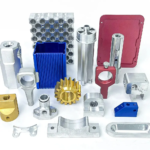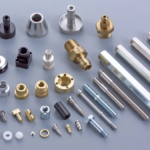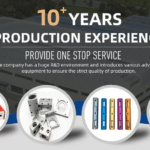3D Printing Troubleshooting: A Collection of All Problems and Solutions (FDM and SLA)
I think you have encountered many printing failures, such as warping of printed parts, print bed sticking, layer shifting, etc.3D printing errors and other problems, today, based on our 3D printer troubleshooting experience, Mohou.com has compiled the most comprehensive guide to diagnosing and fixing common 3D printing problems related to FDM and SLA technology.
FDM 3D Printing Issues:The printing effect is very poor (1)
1、Troubleshooting 3D printing: The first layer is complicated


Upgrading the print bed
Each printer has a different printing platform upgrade process.Specifically, the printer upgrade can be carried out according to the printer model or under the guidance of after-sales personnel.
Lower bed temperature
Try changing the bed temperature to Lower the temperature in 5°C increments until you reach the optimal fixation point without losing detail.
2、3D printing troubleshooting: elephant feet


Gentle balanced bed cooling
In order to avoid When problems arise during 3D printing, the bottom layer of the model must be cooled enough to support the structure above it. If cooled too much, the base layer may warp. Finding a balance that can be difficult starts by lowering the print platform temperature by 5 degrees (within +/- 20 degrees of the recommended temperature). If the bottom/top layer thickness is set to 0.6mm, the fan start height should be slightly lower.
settleflat print bed
Most printing problems often trace back to the printing platform. Each printer has slightly different printing platform upgrade techniques. Start by calibrating the printing platform according to the procedures recommended by the printer manufacturer.
Try printing a calibration cube and watch how the printer spreads the filament on the print bed. After printing the cube, you should easily be able to determine if the print platform is level based on how even (or uneven) the layers are on the print bed.
Likewise, you can tell if the nozzle is too close to the build platform and scratching the melted filament, or if the nozzle is too high and causing the filament to pile up and form balls.
Lift the nozzle
Slightly increasing the height of the nozzle is often helpful, but be careful, too high and the nozzle will not stick to the platform.
chamfered base
Another method is to chamfer the base of the model. Of course, this is only possible if you design the model yourself or have access to the original files. Since Start with 5mm, 45º chamfers, but experiment with them for best results.
3、3D printing troubleshooting: warping


Using a heated print platform
The simplest solution is to use a heated print platform and set the temperature below the melting point of the plastic. this is what we call “Glass transition temperature”. If the temperature is right, the first layer will lay flat on the build platform. The temperature of the print platform is usually set by the cutting software. You will usually find the recommended temperature for your filament on the side of the packaging or on the spool.
Apply adhesive to the print platform
If you still find the edges of your print lifting, apply a small amount of adhesive evenly to the print bed to increase adhesion.
Try different types of platforms
Switch to a printing platform with better adhesion.Manufacturers like Prusa use PEI (polyetherimide) printing surfaces which provide excellent adhesion without the need for glue. XYZPrinting offers textured tape in the box with some of its printers, which is essentially a large sheet of masking tape, which also works well when added, but only on an unheated printing platform. The Zortrax 3D printing machine has a perforation in the printing platform and the model can be welded onto this surface, completely eliminating this problem.
Upgrading the printing platform
Print platform calibration may be another cause, follow the calibration process to verify that the print bed is level and the nozzle height is correct.
Increase the contact surface
Increasing the contact area between the model and the bed is a simple solution, and most printing software has the option to add a raft or platform.
Adjust advanced temperature settings
If nothing else works, then you need to look at the advanced printing settings of your printer and printing software. Try to Increase the print bed temperature in 5 degree increments.
Check the fan cooling in the microtome software, usually set the cooling fan to a height of approx. Go to full power at 0.5mm, try extending it to 0.75mm to give the bottom layer more time to cool naturally.
4、3D Printing Troubleshooting: Cracked Infill


Check the filling density
Check the fill density in the slicing software.A value of around 20% is normal; if it is lower than this value, problems may arise. For larger prints, you may need to increase the infill density to ensure adequate support for the model.
Reduce filling speed
The print speed of the infill can have a significant impact on the quality of the structure. If the infill appears weak, reduce the infill printing speed.
Change fill pattern
Most slicing software allows you to modify the internal structure. You can use grid patterns, triangles, honeycombs, etc. Try to choose different options.
Check the nozzle
The nozzle may be slightly clogged. Although clogging will not affect printing with thicker exterior walls, it can get stuck on the filament due to less flow through the internal structure.
5、3D printing troubleshooting: Gaps between infill and exterior walls


Check padding overlap
This is by far the most common problem and is easy to fix. Found in your cutting software “Fill Overlap” option and increase its value.
exist In Cura, the default setting is 15%. Increase it to 30%.
exist In Simplify3D, you can find this option in “Edit Processing Settings > Fill > Overlap Edges”. Increase the value again. This setting is directly related to the extrusion width, so the percentage value will be a percentage of the extrusion width. When adjusting this setting, always keep it below 50%, otherwise you will start to see an overlapping effect at the periphery of the print.
Print padding before perimeter shell
If the exterior walls of the print are relatively thin, the infill structure may appear. If this happens, you can change the order in which the printer lays down the infill and outer layers. For example, in Check in Cura if “Print infill layer after perimeter” is checked.
Increase the temperature of the hot part
Some of the latest advanced materials such as XT-CF20, etc., due to the carbon fiber part contained in its structure, have a lower tolerance when spreading. When printing with these materials, you may find that a slight 5-10° increase in hot end temperature makes a big difference.
Reduce printing speed
Well, you may be in a hurry to get a print out, but if the printer isn’t perfectly calibrated, printing at higher speeds can cause all sorts of problems. If you need to print quickly, you can also avoid gaps by reducing the print speed on the top layer.
6、3D printing troubleshooting: infill visible from the outside


Check case thickness
Make sure the value you choose for shell thickness is a multiple of the nozzle size.
Increase shell thickness
The simplest solution is to increase the thickness of the shell. Doubling the size will cover the overlap caused by the filling.
Use putty after the perimeter
Most cutting software allows you to enable infill printing after the perimeter.
exist Open “Expert Settings” in Cura and under the “Padding” section check the box next to “Print with padding after perimeter”.
exist Click “Edit Process Settings” in Simply3D, then select “Layers” and under “Layer Settings” select “Outside to Inside” next to “Outline Direction”.
Check printing platform
Check around the model and if you see that the effect is more pronounced on one side than the other, this may be due to calibration. If so, perform the usual calibration procedure.
Advantages of print enclosures
Depending on the type of model you are printing, you can use the inner and outer print order to your advantage. When you want to print a high-quality model with good surface finish and the actual strength of the model is not important, you can choose to print from the outside to the inside. If the strength of your print is important, choose to print from the inside out and double the wall thickness.
The reason for the difference in strength is that when printing from the outside to the inside you can eliminate the small overlap that causes ghosting issues, but it also means that the actual structure won’t have the same bonding strength between the interior and exterior structures. due to lack of overlap.
7、3D printing troubleshooting: cracks on large objects


Extruder temperature
Start by increasing the extruder temperature; a good first step is to increase the temperature; 10ºC. On the side of the filament box you will see the operating temperature of the hot end, try to adjust the temperature within the range of these values.
Fan direction and speed
Check the fans carefully to make sure they are turned on and pointed at the model. If so, try reducing the fan speed.
8、3D Printing Troubleshooting: Misaligned Layers


Check the belt part 1
First check that each belt is tight, but do not over-tighten it. You should feel a little resistance as you pinch the two straps together. If you notice that the upper part of the belt is tighter than the lower part, this is a sure sign that the belt needs to be adjusted and tightened. Some printers have built-in belt tensioners. Other printers can be installed 3D printed belt tensioner. If neither method works for you, you may need to tighten the belt manually.
Check part 2 of the belt
A printer belt is usually just a continuous loop that hooks onto two pulleys. A common problem is that over time the belt slips on a pulley and the upper belt gradually becomes tighter than the lower belt, and vice versa, which can also lead to misalignment of the printed layers.
Check that the rod is clean and oiled
Over time, debris can build up on the shaft, causing increased friction which affects the free movement of the print head, again causing layer drift. A quick wipe down and re-oiling usually fixes the problem.
Check Bent or Misaligned Rod, Part 1
If you notice that the print head is shaking in certain areas, one of the shafts may be slightly bent. The stepper motor can usually be de-energized by stopping the machine and then The X and Y axes move the print head to judge. If you feel resistance, something is wrong. First check if the print bar is aligned. If they are lined up, remove them and roll them onto a flat surface. If there is a turn, it will be obvious.
Check if the rod is bent or misaligned second part
Many printers use threaded rods instead of metal screws, and while these screws do the job, they tend to bend over time. Don’t worry about taking the printer apart to see if it’s straight, just use control software like “Printrun”) to move the print head up and down. If any of the Z axis rods are bent, you will see it immediately. Unfortunately, once the rod is bent, it is almost impossible to straighten it accurately, but on the other hand, it is also a good excuse to replace the old threaded rod with a guide screw.
Check the drive pulley
These pulleys are usually attached directly to the stepper motor or one of the main rods that drive the print head. If you carefully turn the pulley, you will see a small screw. Holding the rod and attached belt, pull on the belt to force the pulley to turn. You should not find any slippage between the pulley and the stepper or rod. If slipping occurs, tighten the adjustment screws and try again.
9、3D printing troubleshooting: missing layers


Mechanical inspection
from time to time It’s a good habit to check your 3D printer, and cracks on your 3D printer are always a good sign that it’s time to give your 3D printer some love. Start by checking the print bars to make sure they are all seated securely in their bearings or clamps and are not coming out, shifting, or moving slightly.
Checking rod alignment
Make sure all the rods are perfectly aligned and have not moved. This is usually accomplished by turning off the power (or disabling the stepper motor) and then switching Move the print head slightly along the X and Y axes to judge. If you encounter resistance during movement, something is wrong, and it’s usually easy to tell whether it’s due to poor alignment, a slightly bent rod, or a problem with one of the bearings.
Bearing wear
When there is a problem with a bearing, it is common to emit a loud noise. You should also feel erratic movement of the print head and the machine will appear to vibrate slightly while printing. If this is the case, unplug the power plug and switch Move the print head along the X and Y axes to locate the damaged bearing area.
Check the lubricant
It’s easy to forget about lubricating your joints, but keeping everything lubricated is essential to keeping your machine running smoothly. Sewing machine oil is an ideal lubricant. It can be purchased at almost any clothing store and is relatively inexpensive. Before liberally applying oil, check that the machine spindle is clean and free of dirt and printing debris.–Before applying new engine oil, it is a good idea to give the engine rod a quick wipe down. When all the stamp sticks look clean, apply just a little, but not too much. Then use printer control software such as Printrun to move the print head in the X and Y axes to ensure that the print bar is evenly covered and moves smoothly. If you add too much oil, don’t worry, just wipe it off with a lint-free cloth.
Underextrusion
The last problem may be insufficient extrusion. Click here to view our dedicated guide to underextrusionTroubleshooting tips for 3D printing.
10、3D printing troubleshooting: Print is tilted


examine X axis and Y axis
If your print is tilted to the left or right, this means There is a problem with the X axis. If it is forward or backward, it is a Y axis problem. Once you have diagnosed the problem, it is time to inspect the belt and pulleys.
Check the belt for friction
Look around each belt to make sure it is not rubbing against the sides of the machine or any other parts. Also check that the belt is correctly aligned. If one of them is slightly tilted, it can cause problems.
Tighten the stepper motor coupler set screws
Once you have diagnosed which axis is causing the problem, use an Allen wrench to tighten the set screw on the corresponding coupler that connects the stepper motor.
Check rod pulley
More complex machines like the Ultimaker 2 have a series of belts and pulleys. There are eight pulleys on the X and Y main rods on the top of the machine. Go around each pulley on the affected shaft and tighten the set screw on each pulley. These pulleys are unlikely to cause slippage, but if one becomes loose, the belt may become misaligned.
Daguang focuses on providing solutions such as precision CNC machining services (3-axis, 4-axis, 5-axis machining), CNC milling, 3D printing and rapid prototyping services.










